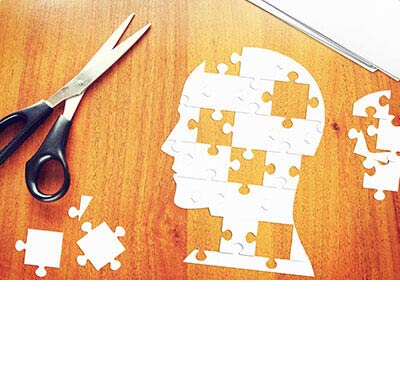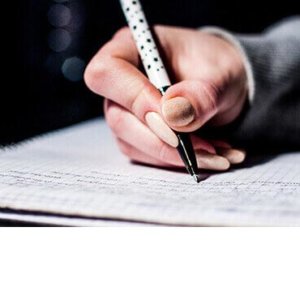- 1.1 Define psychology, explain why psychology is a science and discuss the roots of the discipline.
- 1.2 Describe the major historical events, theoretical approaches, and figures in psychology.
- 1.3 Describe the basic interests and applications in each of the described areas of contemporary psychology.
- 1.4 Identify the various career options for psychologists in and out of academic settings.


Built from OpenStax’s Psychology
Introduction to Psychology
BNED Courseware for Psychology is designed to meet scope and sequence requirements for a single-semester introduction to psychology course. The course offers a comprehensive treatment of core concepts, grounded in both classic studies and current and emerging research including coverage of DSM-5. Topics covered include the basics of psychological research, biological bases of behavior, perception, learning, cognition, emotion, motivation, individual development, psychological disorders, methods of treatment, and an introduction to social psychology. Reflecting the diversity within the discipline, as well as the diversity of cultures and communities across the globe, students apply what they learn through activities and assignments to critically think about issues of psychology in their lives, their communities and the world.
Learning Objectives/
- 2.1 Explain how scientific research addresses questions about behavior.
- 2.2 Describe the different research methods used by psychologists
- 2.3 Describe how the findings of psychological research are analyzed.
- 2.4 Summarize the ethical issues related to conducting research.
- 3.1 Discuss how gene-environment interactions are critical for expression of physical and psychological characteristics.
- 3.2 Identify the parts of a neuron and describe how neurons communicate.
- 3.3 Identify the parts and functions of the nervous system.
- 3.4 Describe the structures and functions of the brain and spinal cord.
- 3.5 Identify the major glands of the endocrine system and describe the role of hormones in regulating bodily functions.
- 4.1 Explain what is meant by consciousness.
- 4.2 Describe areas of the brain involved in sleep.
- 4.3 Identify the stages of sleep.
- 4.4 Identify sleep problems and disorders and their associated treatments.
- 4.5 Describe how different categories of drugs effect behavior and experience.
- 4.6 Recognize the similarities and differences between hypnosis and meditation.
- 5.1 Distinguish between sensation and perception.
- 5.2 Describe important physical features of wave forms.
- 5.3 Describe the basic anatomy and functions of the visual system.
- 5.4 Describe the basic anatomy and functions of the auditory system.
- 5.5 Name and describe the chemical senses (taste and smell) and our body senses (touch, temperature, pain, balance, and body position).
- 5.6 Describe the Gestalt principles of perception.
- 6.1 Describe the key events in the learning process.
- 6.2 Explain classical conditioning and relate it to everyday examples.
- 6.3 Explain operant conditioning and relate it everyday examples.
- 6.4 Define observational learning and describe the steps in the modeling process.
- 7.1 Describe cognition and explain the difference between natural and artificial concepts.
- 7.2 Define language and describe how the use of it develops.
- 7.3 Identify problem solving strategies and explain some common roadblocks to effective problem solving.
- 7.4 Define intelligence and identify the differences between intelligence theories of intelligence.
- 7.5 Describe the history and use of intelligence tests.
- 7.6 Explain how genetics and environment affect intelligence.
- 8.1 Explain how memory functions and recognize the three stages of memory storage.
- 8.2 Explain the brain functions involved in memory.
- 8.3 Describe problems associated with memory, such as amnesia and interference.
- 8.4 List and describe memory-enhancing strategies and effective study techniques.
- 9.1 Define and distinguish between the three domains of development physical, cognitive, and psychosocial.
- 9.2 Describe the theories of development associated with Freud, Erikson, Piaget, and Kohlberg.
- 9.3 Explain the physical, cognitive, and emotional development that occur throughout the lifespan.
- 9.4 Recognize the five stages of grief that accompany death and dying.
- 10.1 Distinguish between intrinsic and extrinsic motivation and explain Maslow’s hierarchy of needs..
- 10.2 Explain key aspects of the physiology and psychology of hunger.
- 10.3 Explain key aspects the physiology and psychology of sex and sexual orientation.
- 10.4 Explain the major theories of emotion and describe the role that limbic structures play in processing emotion.
- 11.1 Define personality and describe early theories about personality development.
- 11.2 Distinguish among Freud’s concepts of the conscious mind, the preconscious mind, the unconscious mind, and the id, ego, and superego; recognize Freud’s stage of psychosexual development.
- 11.3 Discuss the core differences among the Neo-Freudians’ views on personality.
- 11.4 Describe behaviorist, cognitive, and social cognitive perspectives on personality.
- 11.5 Summarize humanistic theory as postulated by Rogers and Maslow.
- 11.6 Discuss the evolutionary perspective on personality development.
- 11.7 Explain the trait theories of personality development.
- 11.8 Discuss the three approaches to studying personality in a cultural context.
- 11.9 Recognize and describe common projective tests used in personality assessment.
- 12.1 Define social psychology and distinguish situational versus dispositional influences on behavior.
- 12.2 Explain what is meant by social norms and describe how they influence behavior.
- 12.3 Define how attitudes are shaped and how persuasion can be used to change them.
- 12.4 Define conformity and recognize the different types of social influences.
- 12.5 Define and distinguish among prejudice, stereotypes, and discrimination and explain why prejudice and discrimination exist.
- 12.6 Define aggression and relate it to everyday examples.
- 12.7 Define prosocial behavior and describe conditions that influence the formation of relationships.
- 13.1 Discuss the history and scope of study in the field of industrial and organizational psychology.
- 13.2 Explain aspects of employee selection and evaluation.
- 13.3 Describe how an Organizational Psychologist studies job satisfaction, different styles of management, different styles of leadership, organizational culture, and teamwork.
- 13.4 Describe the field of human factors psychology and its role in safety, productivity, and job satisfaction.
- 14.1 Define stress and describe the three stages of General Adaptation Syndrome.
- 14.2 Define stressors and explain their origins.
- 14.3 Explain the relationship between stress and illness and identify the characteristics of a Type A personality.
- 14.4 Identify effective and ineffective methods of coping with stress.
- 14.5 Describe the field of positive psychology and identify the kinds of problems it addresses.
- 15.1 Describe the problems inherent in defining the concept of psychological disorder and identify the formal criteria that thoughts, feelings, and behaviors must meet to be considered abnormal and, thus, symptomatic of a psychological disorder.
- 15.2 Explain how psychological disorders are diagnosed and classified.
- 15.3 Identify the differing perspectives on psychological disorders.
- 15.4 List and describe the major anxiety disorders, including their main features and prevalence.
- 15.5 Describe the main features and prevalence of obsessive-compulsive disorder, body dysmorphic disorder, and hoarding disorder.
- 15.6 Describe the nature and symptoms of posttraumatic stress disorder.
- 15.7 Describe the symptoms of major depressive disorder and bipolar disorder.
- 15.8 Categorize and describe the major symptoms of schizophrenia..
- 15.9 Identify and differentiate the symptoms of dissociative amnesia, depersonalization/ derealization disorder, and dissociative identity disorder.
- 15.10 List and distinguish between the three clusters of personality disorders.
- 15.11 Describe the nature and symptoms of attention deficit/hyperactivity disorder and autism spectrum disorder.
- 16.1 Discuss the history of mental health treatment.
- 16.2 Describe the differences between psychotherapy and biomedical therapy.
- 16.3 Distinguish between the different modalities of treatment.
- 16.4 Describe substance-related and addictive disorders and the associated treatments.
- 16.5 Explain how the sociocultural model is used in therapy.







There are no reviews yet.